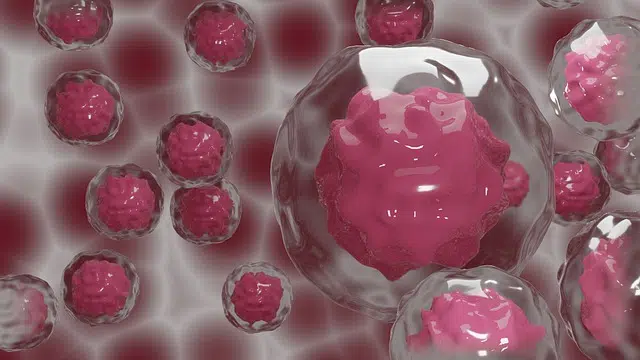
Cellular reproduction is the process that, starting from a mother cell, allows the production of new cells.
Reproduction is the process and result of reproducing . This action makes it possible to generate a copy, produce something again or, in relation to living beings, give birth to a new organism with identical biological characteristics. Cellular , for its part, is that linked to cells (the primary constituent of a living being).
The notion of cellular reproduction refers to the procedure that allows new cells to be generated from a stem cell . It is a process of cell division, which enables the growth of organisms.
Mitosis and meiosis
In the case of eukaryotic cells , cell reproduction usually occurs through mitosis . This process implies that, when a cell reaches a certain level of development, it divides into two daughter cells that are equal and that replicate all of the DNA of the mother cell.
Another type of cell reproduction is meiosis . In this case, a diploid cell develops two divisions successively and, in this way, generates four haploid cells. Meiosis, therefore, involves two cytoplasmic and nuclear divisions ( meiosis I and meiosis II ) that result in the production of haploid cells.
Cellular reproduction of prokaryotes
The reproduction of prokaryotic cells , on the other hand, can develop in different ways, which are explained below.
It is also known as sporogenesis or sputation , and it is a process of cellular differentiation (the gene expression of cells is altered to adopt the functions and morphology of a specific cell type that is different from the rest of those present in the organism. ). Its objective is to produce spores , dispersive reproductive cells of resistance, and is seen in certain classes of bacteria, sporozoa (an example is Plasmodium, which causes malaria) and protozoa, as well as in lichens, fungi and amoebas.
These groups have had a very different evolution since their respective origins, but they share very similar cellular reproduction strategies. Throughout the sporulation process, the nucleus divides into various fragments, each of which is surrounded by a portion of the cytoplasm, giving rise to spores. The number of spores produced depends on the species in question, but each one of them will give rise to a new individual , independent of the parent .

Mitosis is a type of cell reproduction.
The budding
The name of this process refers to the use of buds, and is often found in bryozoans, sponges and coelenterates. It all begins when in one or several parts of the organism a bud or invagination is generated that develops until its base constricts and separates from the parent , to begin to live as an independent being. The new buds may have, in turn, others known as secondary buds .
It is worth mentioning that in some cases the buds do not become independent from the parent, and then form colonies . The way in which the buds are grouped, as well as the differences they present with respect to the others within the colony, usually vary from one species to another.
Bipartition, another form of cellular reproduction
This form of cellular reproduction is also called binary fission and is seen in unicellular algae, fission yeasts, bacteria , protozoa and archaebacteria. In short, it consists of dividing the DNA and then the cytoplasm (a process known as cytokinesis), which results in the creation of two descendant cells.
The growth rate of most bacteria is very high because their reproduction is of this type; Under very favorable conditions, a bacteria such as Escherichia coli (usually found in the intestines of animals) can reproduce every 20 minutes. This explains why many of them become so resistant to antibiotics and proliferate in various environments.
